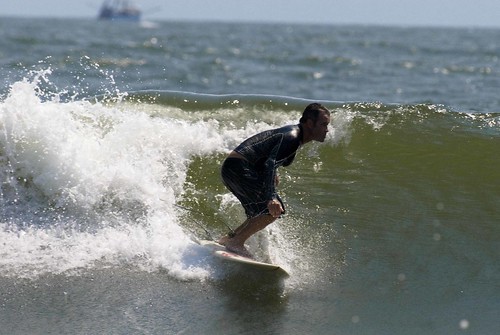
Image : http://www.flickr.com
There is something very primal about open water swimming (even in a wetsuit!). Addressing the elements face to face with the proposed swimming pool every day for me. For most of us, swimming up the majority of our swimming, but I urge you to open up the water if you can, and if you do, here are some useful points for your open water swimming statement -
Sighting
Although the crystal clear sea water (very unlikely in the UK) of swimming, there areno black lines to you, as in swimming instruction. This makes spotting a key skill when they open in water. Screening is the practice of looking ahead of you, your eyes just above the water to assess where you are in the water than where you go. There are some techniques, but I think the easier it is for your eyes just before turning the head to breathe. This should be one smooth motion as you press lightly with the main arm to bring the eye just above the water surfaceLevel and then quickly turn your head from left to breath. The key is to decide how often you watch. View all too often and is slower than you move your hips in water, but too little time his eyes and you can swim off the waste of course. I like the eye about once every eight strokes.
Equipment
Wet suits are mandatory in certain events and, because of their buoyancy, as many swimmers in the race to use them independently. It takes time to get used to, but it is important to have a suit to obtain the properand not restrict movement too. I like the wet suit you are using a straight arm recovery, when my I'm behind, so I'm not tired of working the material recovery in a bent arm. In a triathlon, you must be able to whip off her clothes with ease the transition, then lube up (with the lubricant-oil) in the right places and practice, practice, practice.
Technology tips
-Learning to breathe bilaterally: it is a pain for most peopleTo have a dominant side breathing, but it can help, just outside of your line of swimming, to save time sifting is often or swimming off course. It also comes in handy when injected near swimming and before others do. Nobody likes to swallow salt water easily and breathe out the other side.
Wrestling t-Don 'with water: if they are cut in swimming, or rough seas it is tempting to rationalize and try to swim harder. This is often a futile effort.Maintain regular and relaxed stroke. Working with the forces of nature, you save time and energy.
Nutrition: It's true that can be a bit 'of extra body fat help keep warm, but with neoprene suits, do this work for us, I fear not swim, as an easy excuse to eat junk food. Open water swimming stuff is consumed calories. I usually slow digestion of carbohydrates before a dip (eg, oatmeal) metabolize carbohydrates and quick to help my body, againafter the bath (eg bananas, apples, etc.). Recently, I learned that a drink of coke can help kill any bacteria after your bad, is rolled out of the water you can have a swim!
Finally, practice makes perfect. I learned that the only way to become a good swimmer, often swimming in open water environments offshore. It's so easy - and forget it is best practice to go accompanied by another person!
No comments:
Post a Comment